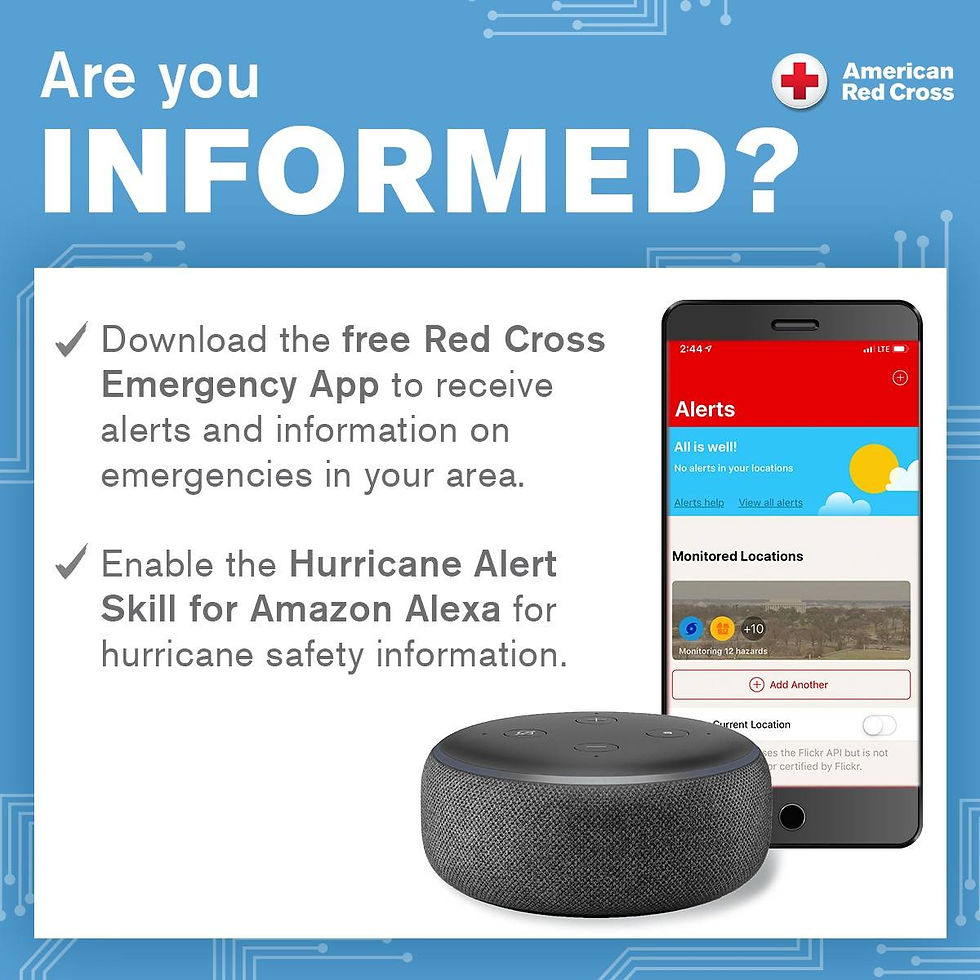National Preparedness Month: Be Informed About Emergencies
- cydneyanderson
- Sep 23, 2019
- 2 min read
written by an American Red Cross Volunteer

Disasters can happen anywhere, anytime —even in someone’s own home. September is National Preparedness Month and the American Red Cross is urging everyone to take three easy steps to get their household ready for emergencies.
These three action steps are as follows: Get a Kit, Make a Plan, Be Informed. This week we will give you all the details on how to be informed so you and your loved ones can react quickly when a disaster strikes. For information on how to build your emergency kit, visit here. Check out the details here on how to make your emergency plan.
KNOW THIS IMPORTANT INFORMATION TO STAY SAFE
Learn the types of disasters or emergencies that may likely occur in your area. These events can range from those affecting only you and your family, like a home fire or medical emergency, to those affecting your entire community, like an earthquake or flood. You can find Red Cross safety information for all kinds of disasters here.
Identify how local authorities will notify you during a disaster and how you will get information, whether through local radio, TV or NOAA Weather Radio stations or channels.Know the difference between different weather alerts such as watches and warnings and what actions to take in each.Know what actions to take to protect yourself during disasters that may occur in areas where you travel or have moved recently. For example, if you travel to a place where earthquakes are common and you are not familiar with them, make sure you know what to do to help protect yourself should one occur.When a major disaster occurs, your community can change in an instant. Loved ones may be hurt and emergency response is likely to be delayed. Make sure everyone is trained in first aid and CPR and knows how to use an automated external defibrillator (AED). This training also covers controlling bleeding, burns, first aid for choking and other emergency situations. You can register to take this training here.
For more information on how to make sure you are informed about emergencies, visit this preparedness information on our web site.
About the American Red Cross:
The American Red Cross shelters, feeds and provides emotional support to victims of disasters; supplies about 40 percent of the nation's blood; teaches skills that save lives; provides international humanitarian aid; and supports military members and their families. The Red Cross is a not-for-profit organization that depends on volunteers and the generosity of the American public to perform its mission. For more information, please visit redcross.org or cruzrojaamericana.org, or visit us on Twitter at @RedCross.

Comentários